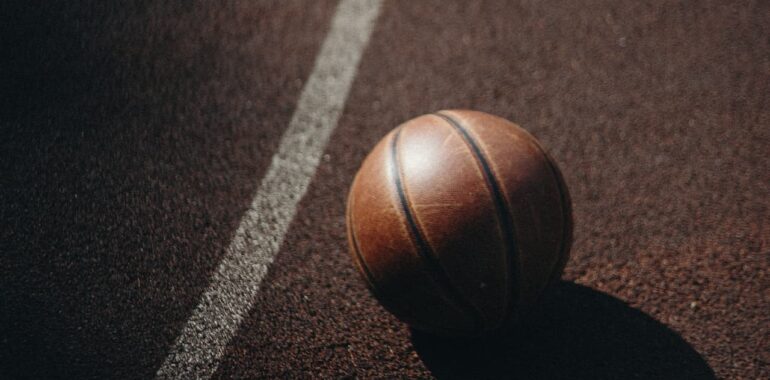The ball in basket

The ball in basket
Like basketball itself, the basketball has an interesting history. It has come a long way from the stitched, rugby ball-like pieces of leather, which had to be constantly pumped up during the game, to today’s balls, which have a strictly spherical shape.
The new spherical shape opened up a number of technical and tactical tricks to basketball, such as dribbling, block shooting and others, in addition to traditional passing and stealing. The traditional color of a basketball is orange. Some people attribute it to the color of the material of the first balls and others attribute it to Spalding, who produced the first orange ball that immediately became part of the basketball rules.
Structurally, a basketball consists of:
- the shell;
- the lining;
- the chamber.
The shell of a basketball can be made of:
- of natural leather.
- of composite and other synthetic materials (rubber, polyurethane (PU).
- Polyvinylchloride (PVC).
The shell of classic basketballs consists of 8 panels, but the company Molten has developed a new design of the ball with 12 panels, which was officially approved by FIBA. Panels are connected by special rubber flat seams.
Under the shell of the ball there is a lining, which may consist of several layers and can be made of different materials, such as polyester or even thin rubber. In balls, each successive sheath (layer) is placed at a 45 degree angle to the preceding one. Strengthening is intended to preserve the flexibility and elasticity of the ball, but also for water resistance.
In the middle of the ball there is a chamber that uses a valve rather than a traditional nipple to inflate the ball. The valve is such a rubber cylinder divided in two, which cannot be pierced or damaged with a needle like a traditional nipple. The chamber of a basketball is traditionally made of butyl (butyl rubber).
Basketballs can be classified by size. The largest size is a size seven ball – officially accepted for competition among men’s teams. Size six is for competition among women’s teams. Sizes three and five are sizes that are designed for training and competition in mini-basketball for the age of players under 12 and under 8 years old, respectively.
According to their intended use, all basketballs can be divided into 2 groups:
- Balls, designed to play only indoors (indoor);
- Universal – for games both indoors and outdoors (indoor/outdoor).
For manufacture of the shell of universal balls use synthetic materials and rubber – it allows to make the coating more durable and prolong the service life of balls. For indoor balls, as a rule, use a shell of leather and composite leather.
According to the level of technology, basketballs can be divided into:
- Professional match balls (Elite competition balls)
- Match balls (Competition balls)
Training/camp recreation balls 3. - Novelty balls (Novelty balls)
PROFESSIONAL MATCH BALLS
Balls, played in official competitions. Match balls are made from top quality leather. Professional match balls must necessarily pass an inspection and certification by FIBA. Certified match balls must be marked with the FIBA APPROVED label. FIBA has strict criteria for certified balls:
- The ball must be made of natural, artificial or synthetic leather (for official FIBA competitions, for others the use of rubber coating is allowed) without the use of toxic materials and materials that may cause allergic reactions. Also in the composition of the casing of the ball must not contain heavy metals and azo dyes.
- The ball shall be of spherical shape with black seams, the width of which shall not exceed 6,35 mm. The shell panels of the ball must be of certain shades and combinations of orange and light brown colors.
- When fully inflated, the ball should bounce to a height of 1.2 to 1.4 meters (measured from the top of the ball) when dropped from a height of 1.8 meters on the playground.
- The ball must be marked with a marking indicating its size.
- Balls of size 7, 749 – 780 mm in diameter and weighing between 567 and 650 grams, should be used during matches of men’s teams.
- Balls of size 6, 724mm to 737mm in diameter and weighing 510g to 567g, should be used for women’s matches.